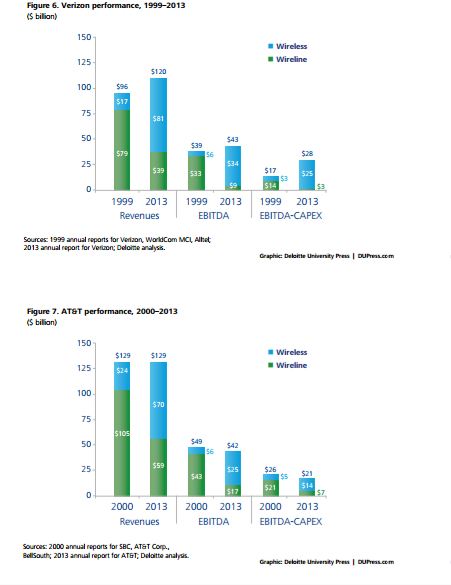“In order to be successful, we must change our cost structure so we can fuel our growth and operate more efficiently,” Sprint spokesman Dave Tovar said, about the most-recent announced cuts at Sprint, said to entail reductions of about $2.5 billion, or roughly seven percent of Sprint’s annual operating costs.
Some problems don't change: former incumbent telecom service providers likely still are the highest-cost providers in most communication markets. So long as competition remains robust, that is going to represent an on-going challenge.
Similar cost-cutting initiatives have occurred rather routinely in the telecommunications industry since deregulation and competition have ramped up, beginning in limited ways in the 1980s, and reaching full-blown proportions in the wake of the Telecommunications Act of 1996.
Perhaps an equally-important rationale is changing in the industry business model since the advent of the Internet, which has turned a growing number of paid-for services into free or very low cost features.
Those pressures are not going to abate. The cost structure of the telecommunications industry, was set during the monopoly era where everything was “cost plus.” In fact, the more money telcos invested in their networks, the more money they made.
The new competitive market, as everybody in the business knows, enjoys no such luxury.
As any executive in the cable TV business can attest, cable’s cost structure is lower than that of the telcos the cable industry generally competes against.
It is not yet clear whether Google Fiber has lower operating costs than a typical cable company, but it is possible. Without a doubt, every independent wireless Internet service provider, every gigabit fixed network provider, every satellite Internet access provider, every communications specialist or niche services provider and every Wi-Fi hotspot network provider likewise has lower costs.
In other words, the former incumbent telco normally is the high cost provider in any market in which it competes. That means the cuts and streamlining will continue.

That particularly is true given the slim profits firms now are wringing from their fixed network operations. For Verizon, the fixed network supplied about 33 percent of revenue, but 21 percent of earnings, in 2013.
Deducting capital investment in the fixed network, Verizon earned just 11 percent from its fixed network, before interest, taxes and amortization (assuming depreciation basically represents the bulk of additional capital investment).
AT&T generates about the same percentage of revenue from its fixed network, about 33 percent. AT&T’s fixed network represents about 21 percent of earnings, and about 11 percent of earnings if capital investment is subtracted.

No comments:
Post a Comment